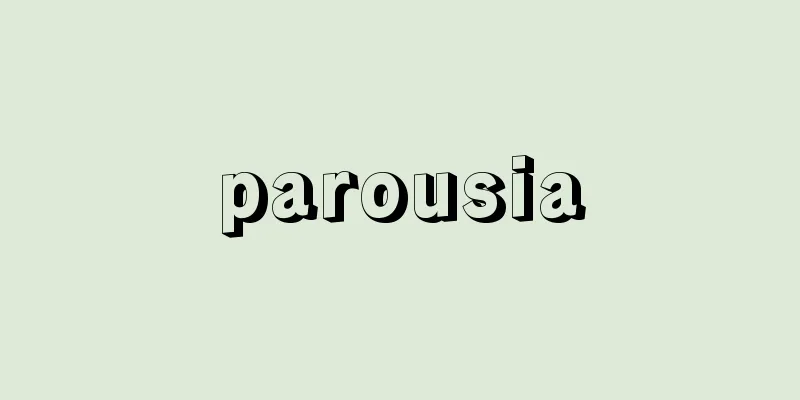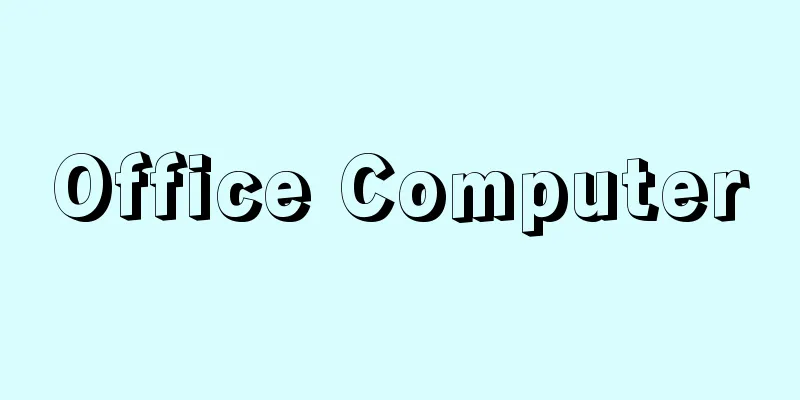Republic of Cameroon

|
A country in the center of the African continent. Its official name is the Republic of Cameroon (French: République du Cameroun). The country is shaped like a long triangle from north to south, bordering Nigeria to the west, Chad and Central African Republic to the east, the Republic of the Congo, Gabon, and Equatorial Guinea to the south, and facing the Gulf of Guinea to the southwest. Its area is 475,442 square kilometers, and its population is 17 million (estimated in 2004), 19,988,219 (estimated in 2010). Its capital is Yaoundé. It is called Mini-Africa because it has many characteristics seen in Black Africa in both natural and human social aspects. Its national motto is peace, work, and homeland. The three colors of the flag, green, red, and yellow, symbolize the natural features of the country, which is divided into tropical rainforest (green) and savanna (yellow), and the red in the middle, along with the gold star, represents the unity of the entire nation. The green also represents hope, and the yellow represents happiness. The country's name comes from the fact that the Portuguese, who arrived in the 16th century, called the mouth of the Wouri River (near Douala) Rio dos Camarônes (River of Shrimps). [Hiroshi Kadomura] NatureTopography and geologyThe southern and central parts of the country are stepped plateaus made of Precambrian crystalline rocks, while the northern Benue River basin and Lake Chad Basin are lowlands, widely covered with sedimentary rocks from the Cretaceous period and Quaternary layers. Active volcanic activity has occurred along the central Adamawa Plateau and the tectonic line that runs north-northeastward through the western part of the country since the Cretaceous period, and the Adamawa Plateau and the western highlands are widely covered with lava flows. The latter is a tectonic line that runs from Sao Tome Island to the Tibesti Mountains in central Sahara, and large and small volcanoes such as Mount Cameroon (the highest peak is Fako, 4,095 meters) have erupted along this line. Lake Nyos, which experienced a gas eruption event in 1986, is one of the small crater lakes. In the tropical rainforest and humid savannah areas of the southern half, the rocks have been deeply weathered due to the humid tropical climate, and red soil rich in iron and alumina covers the surface. In contrast, in the dry savannah region in the central part of the country, the red soil has peeled off, and in many places the hard pan (kilas) layer made of iron and alumina is exposed on the surface. The main rivers originate in the Adamawa Plateau in the central part of the country, and those that flow northward flow into the Niger River and Lake Chad, those that flow southeastward flow into the Congo River, and only the Sanaga River system that flows southwestward flows directly into the sea. [Hiroshi Kadomura] climateThe climate varies from a completely humid climate in the tropical rainforests of the south and coast to a semi-humid climate in the humid savannah of the central region, and a semi-arid climate in the dry savannah-steppe region of the north. The annual precipitation is more than 2,000 mm on the coast, and more than 10,000 mm on the southwestern slope of Mount Cameroon, but it gradually decreases northward to less than 1,500 mm inland, and less than 500 mm in the northernmost region. Rain is brought by the humid monsoon from the Gulf of Guinea that blows into the intratropical convergence zone moving north in summer, and in winter, when the convergence zone moves south, the dry northeast trade wind harmattan blows from the Sahara Desert, resulting in a severe dry season for 5 to 8 months in the central and northern regions. Even in the southern forests, there is generally little rain in winter, and in the inland areas of the southern plateau, centered on the capital Yaoundé, there is light rain even in July and August. The average temperature is 25-26°C along the coast and 27-28°C or higher in the northern lowlands, but is 20-24°C on the inland plateau, and is cooler in areas above 1,500 meters above sea level. [Hiroshi Kadomura] BiotaThe vegetation changes from south to north, from evergreen forest to semi-deciduous forest (all tropical rainforest), moist savanna, dry savanna, and steppe, depending on the amount of rainfall and the length of the dry season. The fauna is rich, reflecting the diverse environmental conditions. However, in the forest areas of the south and west, the forests have deteriorated due to the expansion of timber harvesting areas and the expansion of slash-and-burn farmland due to population growth, resulting in a narrowing of the habitats of wild animals such as baboons, chimpanzees, and elephants. In the savanna and steppe areas of the central and northern parts of the country, grazing and burning have limited the habitats of large wild animals such as elephants and giraffes to national parks and game reserves such as Waza, Kalamaloe, and Benue. [Hiroshi Kadomura] Regional divisionBased on regional characteristics of climate, vegetation, and topography, the country is divided into three major natural regions: Southern Cameroon Forest (coastal region, South Cameroon Plateau), High Plateau (Adamawa Plateau, Western Highlands), and Northern Cameroon (Benue Plain, Mandara Mountains, Diamare Plain, Logonne Plain, Lake Chad Basin Lowlands). Each of these regions is further divided into the regions shown in parentheses. Within each of these regions, there are clear regional differences in economic activities, centered on agriculture, livestock, and forestry, and in lifestyles. [Hiroshi Kadomura] historyThe coast of Cameroon became known to Europe after the arrival of Portuguese explorer Ferdinand Pau in 1472, but inland around Lake Chad, kingdoms such as the Sao and Mandara rose and fell between the 5th and 16th centuries. In the 18th century, Islamized pastoralists, the Fulbe (also called Fulani or Pour), invaded the savannah of the central north from the west in the name of jihad (holy war) and established chiefdoms, and in 1806 the powerful Adamawa Kingdom was established. In the western highlands, the Bamileke and Bamun settled in the 17th and 18th centuries and developed their own unique social organization and culture. In the 17th century, the Douala people migrated from the south to the coast and traded with Europeans who arrived on the coast. In contrast, Bantu tribes were slow to settle in the southern forests, and in the early 19th century, the Fang people, who had been pushed out of the central savannah by the Fulbe, were still migrating toward the coast. The colonization of Cameroon began in 1884 when the Emir of Douala signed an agreement to become a German protectorate. After Germany was defeated in World War I, East Cameroon was divided and governed by France and West Cameroon by Britain as a mandated territory of the League of Nations (1922-1946). After World War II, it became a UN trust territory, but like other African countries, independence movements became active. East Cameroon gained independence in 1960, and West Cameroon, which was part of Nigeria, gained independence in 1961, and the two were united to form a federal republic. After that, the east and west were integrated, and the country's name was changed to the United Republic of Cameroon in 1972 and the Republic of Cameroon in 1984. [Hiroshi Kadomura] PoliticsThe political system is a republic. The constitution was promulgated in 1972 and was amended in 1975, 1996, and 2008. Many political parties arose just before independence, but after independence, the Cameroon National Union (UNC), led by M. Ahidjo, became a one-party state and maintained a stable government. After President Ahidjo resigned in November 1982, Prime Minister Paul Biya (1933- ) became president, and from August 1983 he also served as leader of the UNC (renamed the Cameroon People's Democratic Union (CPDM) in 1985), and was re-elected in the 1992 presidential election with about 40% of the votes. During this time, a coup d'état supporting former President Ahidjo occurred in April 1984, but was suppressed. In 1990, in line with international trends and domestic demands for democratization, opposition parties were allowed and a multi-party system was introduced. The 1996 constitutional amendments set the presidential term at seven years (with no reelection), and in response to the demands of the former British West Cameroon group for political liberalization and a return to a federal system, decided to establish a bicameral Senate and expand regional autonomy, but the latter two were not realized. Therefore, the parliament remains the unicameral National Assembly, with 180 seats and five-year terms for members. In the 2007 parliamentary elections, 1,274 candidates from 41 parties ran, but the ruling party CPDM won a landslide victory with 153 seats, while the leading opposition party, the Social Democratic Front (SDF), won only 16 seats. Presidential elections were held in 1997 (with 92.57% of the votes) and 2004 (with 70.92%), and Bia won both by a landslide, making him the sixth consecutive term in office for more than 25 years. There is deep-rooted dissatisfaction with the dictatorial rule of Bia's administration, especially in the former British West Cameroon, and in late February 2008, large-scale anti-government riots broke out simultaneously in western towns such as Douala, Buea, and Bamenda, as well as in the capital, Yaoundé, in protest of soaring gasoline and food prices and proposed constitutional amendments that would effectively limit the term of office of the president. The government responded by lowering prices, but also used force to suppress the riots and took measures to restrict freedom of speech and the press for both domestic and foreign media. The proposed constitutional amendments, which revised the presidential re-election provisions and granted immunity from liability for presidential actions, were passed on April 10 of the same year, making it possible for Bia to be re-elected from 2011 onwards. The Cabinet has a complex structure, with over 30 ministries and agencies and approximately 50 ministerial posts. The military consists of the Army, Navy, Air Force, National Police, and Presidential Guard. One problem that has attracted international criticism is the widespread corruption, including bribery and embezzlement of public funds and subsidies, at various positions and responsibilities, from ministers and senior bureaucrats to low-ranking local civil servants. The government has strengthened its measures, including the establishment of a national anti-corruption watchdog (2006), but these have not been effective. [Hiroshi Kadomura] DiplomacyIt has strong ties with its former colonial masters, France and the United Kingdom, and has signed military, cultural, and economic agreements with France. In 1995, it became a member of the British Commonwealth, an organization of former British territories. It maintains close ties with other EU (European Union) countries, but has a non-aligned policy and has actively pursued diplomacy with former Eastern Bloc countries. Recently, it has been deepening its ties with the United States and China. It joined the United Nations in 1960, and has since become a member of many UN and international organizations. It is an important member of the African Union, and plays a central role in the Union of Central African Customs and Economics (UDEAC), which is composed mainly of former French colonies, and is one of the most multifaceted countries in Africa in terms of diplomacy. Cameroon and neighboring Nigeria had been engaged in repeated armed conflict over the ownership of the Bakassi Peninsula, which is rich in oil and fishing resources. However, following a ruling by the International Court of Justice and through the mediation of the United Nations, the peninsula was finally transferred to Cameroon in August 2008. [Hiroshi Kadomura] Economy and IndustryAfter independence, the country continued to enjoy rapid economic growth until the mid-1980s, thanks to the steady growth of primary product exports such as agricultural products and timber, and the rapid expansion of the oil sector since the late 1970s. However, in 1986, the international prices of major export products such as coffee, cocoa, and oil plummeted, causing exports to fall by one third, and a severe economic crisis has continued ever since. From 1990 to 1993, with the support of the IMF (International Monetary Fund) and the World Bank, economic reforms such as promoting corporate investment and streamlining agricultural production were attempted, but were unsuccessful. The worsening political situation after the 1992 presidential election prompted demands for structural adjustment. In January 1994, the CFA franc was devalued by 50%, and the accompanying promotion of structural adjustments helped to stop the decline in exports. In 2005, the IMF wrote off $255 million of the country's accumulated foreign debt, on the condition that the country move away from its excessive reliance on oil as a source of income and diversify, and promote trade liberalization, and the country began to recover. The recent real growth rate of GDP (gross domestic product) is 4%, and GDP per capita is $1,325 (2008), of which 20.6% is from agriculture, 24.4% from industry, and 41.3% from services (2007 estimate). [Hiroshi Kadomura] resourceThe country is not blessed with mineral resources, producing only small amounts of gold and tin. Iron ore deposits in the eastern southern forest area and bauxite deposits in the Adamawa Plateau are considered promising for development, but mining has not progressed due to poor transportation. Oil has been extracted from the seabed off the northwest coast of Limbe (formerly Victoria) since the late 1970s, and the country became an oil-producing country in 1978, but oil production has recently declined. Exploration for the development of new oil fields is ongoing in the coastal waters from Douala to Kribi. The Sanaga River system is rich in hydroelectric potential and has many waterfalls, making it suitable for dam construction. A hydroelectric power plant is in operation at Edea Dam downstream, and there are several other power generation or regulating dams on the main and tributaries. In the north, there is a power generation dam at Lagoudo (south of Garua) on the Benue River. [Hiroshi Kadomura] AgricultureApproximately 70% of the total population is agricultural, but arable land accounts for only 13% of the country's land area, and permanent farmland accounts for only 2%. The country is characterized by small-scale farming, with each farmer managing an average of less than two hectares, and by cultivating a wide variety of subsistence crops, as well as major export products such as cocoa, coffee, and cotton. Large-scale plantations by large capitalists are carried out by development corporations and European companies in the humid and fertile western highlands, along the coast, and on the fringes of the inland forests. Around Mount Cameroon, there are large plantations run by the Cameroon Development Corporation (CDC), which cultivate oil palm, rubber, bananas, and other crops. In addition, a variety of other crops, such as coffee, tea, and sugar cane, are grown in response to the climate and soil conditions. Large-scale rice paddy development using irrigation has been carried out in the Logonne Plain in the north and in the western highlands. The types of staple food crops grown for subsistence are diverse, depending on the natural conditions and lifestyle: sorghum, pearl millet, and groundnut in the north, cassava (a type of tuber), sorghum, maize in the Adamawa Plateau and its surrounding areas, maize, cereals, plantain bananas (cooking bananas), and plantain bananas, cassava, groundnut, or makabo (a type of tuber) in the southern forest zone. [Hiroshi Kadomura] forestryThe tropical rainforests in the south are rich in forest resources, and more than a dozen useful species of trees similar to mahogany, teak, and ebony (such as akaju, sipo, iroko, and azobé) have been harvested mainly by selective logging. The amount of harvested reached approximately 14.6 million cubic meters in the early 1990s. While promoting large-scale forest development, as a central member of ITTO (International Tropical Timber Trade Organization) and COMIFAC (Commission for Forestry in Central Africa), the country is also focusing on nature conservation by establishing forest and animal reserves, aiming for forest development in harmony with the environment. [Hiroshi Kadomura] Livestock and FisheriesThe main industry in the savanna steppe region, which occupies about two-thirds of the country, is livestock farming, with the Adamawa Plateau, the Western Highlands, and the northern lowlands at the core, where 5.6 million cattle and 7 million goats and sheep (2007 estimate) are raised. The country is also a fishing nation, with coastal fisheries and inland fisheries in various rivers and lakes such as Lake Chad, and the annual catch is around 168,000 tons (2007 estimate). In coastal waters, overfishing, including illegal operations by foreign trawlers, is accelerating the decline of resources. [Hiroshi Kadomura] IndustryThe main industries are oil production and refining, food processing, light consumer goods, spinning, and wood processing. The Edea dam site is home to Africa's second largest alumina factory (the raw material bauxite is imported from Guinea). Domestic agricultural and forestry product processing and manufacturing industries are located in distinctive regions, with palm oil, rubber, coffee, cocoa, and tea on the coast and southwest, lumber, paper, cocoa, and sugar in the southern forest area, and silk and leather tanning in the northern savannah area. [Hiroshi Kadomura] Trade, Finance, and FinanceThe main export products are crude oil and petroleum products, coffee, cocoa and processed products, timber, aluminum ingots, galvanized iron sheets, and cotton. In 2008, total exports were $4.35 billion, consisting of fuel and mineral products (65.2%), agricultural products (26.2%), and industrial products (3%). The main export destinations are France and other EU countries (about 74%), followed by the United States and China. Total imports were $4.36 billion, consisting of industrial products such as machinery and electronic products (49%), and agricultural products (21.5%). The main import destinations are EU countries (35%) and Nigeria (23.3%), followed by China (6.3%), Equatorial Guinea (3.5%), and the United States (2.9%). The trade balance has recently been roughly balanced. The currency is the CFA franc, as it is a member of the Central African Customs and Economic Union. The fiscal balance for 2009 was $3.838 billion in revenues and $3.781 billion in expenditures. The national budget for 2010 is approximately $4.87 billion, with emphasis placed on stabilizing civil administration and eliminating poverty. The country's accumulated external debt, which accounted for 37% of GDP in 2005, has fallen to 5-6% of GDP since 2006 thanks to IMF reduction measures. Official Development Assistance (ODA) receipts were $1.37 billion in 2007 and $590 million in 2008, which was affected by the global financial recession. [Hiroshi Kadomura] Transportation and CommunicationsStarting from the international sea and air port of Douala, there are railways that run through the capital Yaoundé to Ugandere (935 km) and to Kumba in the west (150 km). The country has a total road network of about 65,000 km, but only about 10% of it is paved, and the sparsely populated forest areas in the southeast and the savannah areas in the center lack road networks. There are international airports in Douala, Yaoundé and Garwa with regular flights from Europe and African countries. Regular sea routes were available between major cities in the country, but the national airline Cameroon Airlines was abolished in 2008 and the number of routes was greatly reduced. Civil aviation has started operating on major routes only, but regular service is still far from being available. There are international ports in Douala, Bonabéry, Kribi and Tiko on the Gulf of Guinea, and Garwa along the Benue River in the north. Mobile phones have become increasingly popular as a form of telephone service, and although the Internet penetration rate is only 3.8% of the population (estimated for 2009), there are Internet cafes in most major towns and cities. [Hiroshi Kadomura] societyPeople and LanguageThe racial and ethnic composition is extremely diverse, with a rich variety including hunter-gatherers called Baka (Negrilo, also known as pygmies) in the southern forests, Bantu blacks in the forests and savannas, Bantoid (Semi-Bantu) blacks in the western highlands, Sudanese blacks in the northern savannas, and Semitic-Hamitic peoples, totaling over 250 ethnic groups. Each group has its own language, but the major regional languages are Fulfulde (Fulbe) in the north, Bassa and Ewondo in the south, and pidgin English is widely spoken in the coastal areas. The official languages are English and French, due to the history of independence achieved by integrating former British and French territories. [Hiroshi Kadomura] populationAs of mid-2009, the total population was 18,879,301, with a population growth rate of 2.19% from 2008 to 2009, and over 40% of the population being under 14 years old. The population density is 41 people per square kilometer on average across the country, but there are large regional differences, with sparse areas with less than 10 people in the forests of the southeast and the savannah of the central region, while high-density areas with more than 500 people can be found in the western highlands and the northern part of the Mandara Mountains. The infant mortality rate is 7.87%, and the average life expectancy is 51.55 years for men and 53.68 years for women (2009 estimate). Population migration from rural areas to cities continues, with the urban population rate reaching 53.69% of the total population (2009 estimate). The concentration of population in Yaoundé and Douala is particularly high, resulting in many urban problems such as a shortage of housing and educational facilities, unemployment, and waste disposal. [Hiroshi Kadomura] educationSince independence, efforts have been made to expand school education. The average primary school (net) enrolment rate from 2003 to 2008 was 84%. The enrolment rate is low in the north, where there are many pastoralists, but the national average literacy rate for those aged 15 and over is 68% (estimated for 2009). The country started out with one university, the Federal University of Cameroon, the predecessor of the national comprehensive university, the University of Yaoundé. In 1982, with the aim of decentralizing universities, national single-faculty universities were opened in Cham (Western Province), Douala (Coast Province), Buea (Southwestern Province), and Ugandere (Northern Province) to correspond to the industrial activities of each region. In 1993, with the aim of reforming higher education and research institutions and decentralizing them, the University of Yaoundé was divided, and each single-faculty university was upgraded to a comprehensive university, while the establishment of private universities was promoted. Following this policy, not only did private universities, which had never existed before, open one after another, but in 2008 the national University of Malwa was established in Malwa, the northernmost region. The main private universities are Bamenda University of Science and Technology (Bamenda), Plateau University (Bangante, medicine, science and engineering), Catholic University of Central Africa (theology), Protestant University of Central Africa (theology, social science), and University of Yaoundé-South Ndi Samba (business administration) (all in Yaoundé). In 2006, the total number of students enrolled in all universities exceeded 108,000, and about 50,000 students enroll every year, and more than 95% of them want to enroll in national universities, so national universities are chronically suffering from a severe shortage of classrooms and other infrastructure and faculty. There are also many students studying abroad at universities and graduate schools in Europe, the United States, and Japan. There is a continuous brain drain due to the lack of employment opportunities in the country. [Hiroshi Kadomura] religionWhile Islam is widespread in the north, the south and west are dominated by Christians due to the influence of Christianity (Catholic and Protestant) that was spread during the colonial period. Traditional religions such as animism remain widespread, which is a factor in the country's diverse culture. [Hiroshi Kadomura] cultureThe country is made up of many ethnic groups with diverse languages, lifestyles, and religions, resulting in an extremely diverse traditional culture. The languages and cultures of the former colonial powers, Britain and France, have also overlapped to form a multi-layered structure. Traditional crafts include masks and woodcarvings from the Western Highlands, and each ethnic group has its own unique dance and festivals. Soccer is popular in sports, and the whole country becomes excited about international matches. The country has won the Africa Cup of Nations four times, and the men's team won the Olympic Games in Sydney in 2000. [Hiroshi Kadomura] Nature conservation and tourismThere are seven national parks in total, each with its own unique natural landscapes and fauna, in the tropical rainforest, savanna, and steppe zones. Waza National Park (a Ramsar site) in the seasonal floodplain of the Logonne Plain in the north is known as the home of many kinds of large wild animals and birds, and together with the lunar-like rock tower scenery of Kapsiqui (also called Lumski) in the Mandara Mountains to the southwest, it is one of Cameroon's leading tourist destinations. Korap, which occupies the tropical rainforest zone in the southwest, has attracted international attention for its new management strategy of opening the core area only for environmental conservation activities and research, establishing a buffer zone around it, and promoting agroforestry (a combination of agricultural crops and fruit tree cultivation) to promote economic development for local residents. The Dja Game Reserve, located in the center of the southern rainforest and home to many kinds of wild animals including gorillas and elephants, has been registered as a UNESCO World Heritage Site and is managed in a similar manner to Korap, and together with Korap, it has become a world-class ecotourism destination. In recent years, the biggest threat to biodiversity in the rainforests of the Congo Basin, including Cameroon, has been the sharp increase in the illegal capture of endangered wild animals such as gorillas, chimpanzees, and elephants, and the illegal trade of their meat, or bushmeat. To put a stop to this problem, the Cameroonian government has begun to create a concrete legal framework to restrict illegal trade. [Hiroshi Kadomura] Relations with JapanBoth countries have opened embassies in Yaoundé and Tokyo, and active exchanges are taking place not only in trade and development aid, but also in academic and cultural fields. Cameroon's exports to Japan amounted to 328 million yen, mainly lumber, cotton, and coffee beans, while imports amounted to 4,276 million yen (2007), mainly automobiles, machinery, and equipment. Japan's recent economic cooperation has focused on areas directly linked to the improvement of people's lives and welfare, such as contributions to the field of primary education, such as the construction of elementary schools, as well as safe water supplies, infectious disease control, and agriculture, fisheries, and rural development. In 2006, Japan Overseas Cooperation Volunteers were dispatched, and substantial support activities began to be carried out in the field in rural areas. In the same year, a commemorative friendship stamp was issued to commemorate the support for the construction of elementary schools. In 2003, Nakatsue Village (now Hita City), which was the training camp site for the Cameroon national team during the 2002 FIFA World Cup in Japan and Korea, and Mayomesara City in the forest area of Southern Province (the birthplace of President Biya) signed a friendship agreement. [Hiroshi Kadomura] [References] | | |Organization Unity| | | | | | | | | | | | | | | | | | | | | | | | | | [Supplementary material] |"> Cameroon flag ©Shogakukan Illustration/Shogakukan Creative "> Cameroon location map Source: Shogakukan Encyclopedia Nipponica About Encyclopedia Nipponica Information | Legend |
|
アフリカ大陸の中部にある国。正式名称はカメルーン共和国République du Cameroun(フランス語)。国土は南北に長い三角形の形状をなし、西はナイジェリア、東はチャド、中央アフリカ、南はコンゴ共和国、ガボン、赤道ギニアの各国と国境を接し、南西はギニア湾に面する。面積47万5442平方キロメートル、人口1700万(2004推計)、1998万8219(2010推計)。首都はヤウンデ。 自然、人文社会の両面にわたり、ブラック・アフリカにみられる諸特徴を備えているので、ミニ・アフリカとよばれる。平和、労働、祖国を国是とする。国旗の緑、赤、黄の3色は熱帯雨林(緑)とサバンナ(黄)に二分される国土の自然を象徴し、真ん中の赤は金の星とともに全国民の統一を表している。そして緑には希望、黄には幸福の意味合いが含まれている。国名は、16世紀に来航したポルトガル人が、ウーリー川河口(ドゥアラ近郊)をリオ・ドス・カマローエンス(小エビの川)とよんだことに由来する。 [門村 浩] 自然地形・地質南部および中部は先カンブリア代結晶質岩石からなる階段状の高原地形をなすが、北部のベヌエ川流域とチャド湖盆地域は低地帯をなし、白亜紀以降の堆積(たいせき)岩や第四紀層で広く覆われている。中央部のアダマワ高原と西部を北北東方向に延びる構造線に沿って、白亜紀以来活発な火山活動が繰り返され、アダマワ高原と西部高地は溶岩流で広く覆われている。後者はサントメ島から中央サハラのティベスティ山地に至る構造線で、カメルーン山(最高峰はファコ、4095メートル)など大小の火山がこれに沿って噴出している。1986年ガス噴出事変をおこしたニオス湖は小火口湖の一つ。南半分の熱帯雨林および湿潤サバンナ地帯では、湿潤熱帯気候のため岩石が深く風化し、鉄、アルミナに富む赤色土壌が地表を覆っている。これに対し中部の乾燥サバンナ地帯では赤色土壌が剥離(はくり)されて、鉄、アルミナからなる硬盤層(キラス)が地表に露出する所が多い。おもな河川は中央部のアダマワ高原に発し、北流するものはニジェール川とチャド湖に注ぎ、南東流するものはコンゴ川に注ぎ、南西流するサナガ川水系だけが直接海に注ぐ。 [門村 浩] 気候南部、海岸部の熱帯雨林地帯の完全湿潤気候から中部湿潤サバンナ地帯の半湿潤気候、北部乾燥サバンナ・ステップ地帯の半乾燥気候までの変化がある。年降水量は海岸部で2000ミリメートル以上、カメルーン山南西斜面には1万ミリメートルを超える多雨域があるが、内陸部では1500ミリメートル以下で北に向かって漸減し、最北部では500ミリメートル以下となる。雨は夏に北上する熱帯内収束帯に吹き込むギニア湾からの湿ったモンスーンがもたらし、収束帯が南下する冬はサハラ砂漠から乾いた北東貿易風ハルマッタンが吹き出し、中北部では5~8か月の間厳しい乾期となる。南部の森林地帯でも全般的に冬に雨が少なく、首都ヤウンデを中心とする南部高原の内陸部では7~8月にも小雨である。平均気温は海岸部25~26℃、北部の低地帯27~28℃以上であるが、内陸の高原では20~24℃で、標高1500メートル以上の高地は冷涼である。 [門村 浩] 生物相植生は降雨量と乾期の長さに対応して、南から北へ常緑樹林、半落葉樹林(以上熱帯雨林)、湿潤サバンナ、乾燥サバンナ、ステップへと移行する。多様な環境条件を反映して動物相は豊富である。しかし、南部・西部の森林地帯では、木材伐採域の拡大、人口増に伴う焼畑耕作地の拡大などによって森林が退行したため、ヒヒ、チンパンジー、ゾウなどの野生動物の生息域が狭められている。中部・北部のサバンナ・ステップ地帯では、放牧と火入れのため、ゾウやキリンなど大形野生動物の生息域がワザ、カラマロエ、ベヌエなどの国立公園や動物保護区に限られるようになった。 [門村 浩] 地域区分国土は気候、植生、地形の地域的特徴から、南部森林(海岸地域、南カメルーン高原)、高位高原(アダマワ高原、西部高地)、北カメルーン(ベヌエ平原、マンダラ山地、ディアマレ平原、ロゴンヌ平原・チャド湖盆低地)の三大自然地域に区分され、それぞれさらに括弧(かっこ)内の地域に細分される。これらの諸地域ごとに、農牧林業を中心とした経済活動と生活様式に明瞭(めいりょう)な地域差がみられる。 [門村 浩] 歴史カメルーンの海岸がヨーロッパに知られるようになったのは、1472年にポルトガル人探検家フェルナンド・ポーが来航してからであるが、内陸のチャド湖周辺では5~16世紀にサオ、マンダラなどの王国が盛衰した。中北部のサバンナ地帯には18世紀に西方よりイスラム化牧畜民フルベ(フラニ、プールともいう)がジハド(聖戦)の名の下に侵入して首長国をつくり、1806年には強大なアダマワ王国が建設された。西部高地には17~18世紀にバミレケ人、バムン人が定着して独得の社会組織と文化を発展させた。海岸部では17世紀に南方からドゥアラ人が移住し、来航するヨーロッパ人と商取引を行っていた。これらに対し、南部森林地帯へのバントゥー系諸族の定着は遅く、19世紀初頭には中部のサバンナ地帯からフルベ人に押し出されたファン人が、まだ海岸方向に移動を続けていた。カメルーンの植民地化は1884年ドゥアラの首長がドイツの保護領となる協定を結んだことに始まる。第一次世界大戦でドイツが敗れると、国際連盟の委任統治領として、東カメルーンはフランス、西カメルーンはイギリスが分割して統治した(1922~1946)。第二次世界大戦後は国連の信託統治領となったが、他のアフリカ諸国同様、独立運動が盛んになった。東カメルーンは1960年、ナイジェリアの一部であった西カメルーンは1961年に独立して、両者合体して連邦共和国となった。その後東西間の融合が図られ、1972年国名をカメルーン連合共和国、1984年カメルーン共和国と改称した。 [門村 浩] 政治政体は共和国。1972年憲法公布、1975年、1996年、2008年に改正した。独立直前には多数の政党が乱立したが、独立後はM・アマドゥ・アヒジョの率いるカメルーン民族同盟(UNC)の一党制となり、安定した政権が続いた。1982年11月大統領アヒジョの辞任後、首相のポール・ビアPaul Biya(1933― )が大統領に就任、1983年8月以後はUNC(1985年カメルーン人民民主連合(CPDM)と改称)党首を兼任し、1992年の大統領選では約40%の得票で再選された。この間、1984年4月に前大統領のアヒジョを支持するクーデターが発生したが鎮圧された。1990年、国際的な趨勢(すうせい)と国内からの民主化の要求に従い、反対政党を認め多党制を導入した。1996年の改憲では、大統領の任期を7年(再選禁止)にするとともに、旧英領西カメルーングループの政治の自由化と連邦制への復帰の要求にこたえて上院を設け二院制とすることと、地方州自治権を拡大することが決まったが、後二者は実現していない。したがって、議会は一院制国民議会のままで、その議席は180、議員の任期は5年である。2007年に行われた国会議員選挙では41党1274人が立候補したが、与党のCPDMが153議席を獲得して圧勝し、野党第一党の社会民主前線(SDF)は16議席を得たにすぎない。大統領選挙は、1997年(得票率92.57%)と2004年(70.92%)に行われたが、いずれもビアが圧勝し、6期連続で在任期間が25年を超えている。こうしたビア政権の独裁に対しては、旧英領西カメルーンを中心に根強い不満があり、2008年2月下旬にはガソリン・食糧価格の高騰と、大統領任期を事実上無制限とする改憲案に抗議する大規模な反政府暴動がドゥアラ、ブエア、バメンダなど西部の町と、首都ヤウンデで同時多発した。これに対し、政府は物価引下げ策で応じる一方で、暴動を武力で鎮圧するとともに、内外のメディアの言論・報道の自由を制限する措置で臨んだ。大統領の再選規定の改定と大統領としての行為についての免責特権付与を盛り込んだ改憲案は、同年4月10日に可決され、ビアの2011年以降の再選が可能となった。 内閣の組織は複雑で、30を超える省庁からなり、大臣職のポストは約50もある。軍事力には、陸軍、海軍、空軍、国家警察隊、大統領護衛隊がある。国際的な批判を浴びている問題に、閣僚・高級官僚から地方の下級公務員に至るまでのさまざまな地位と所掌における賄賂(わいろ)や公的資金・補助金の横領など、汚職の蔓延(まんえん)がある。政府は国家汚職防止監視機関を設ける(2006)などして対策を強化しているが、実効はあがっていない。 [門村 浩] 外交旧宗主国フランス、イギリスとの関係が深く、フランスとは軍事、文化、経済において各協定を結び、1995年には旧イギリス領の組織であるイギリス連邦の一員となる。他のEU(ヨーロッパ連合)諸国とも緊密な関係を保っているが、非同盟を原則とし、旧東側諸国とも積極的な外交を行ってきた。最近は、アメリカ、中国との関係を深めている。国連には1960年に加盟し、その後多くの国連・国際機関のメンバーとなっている。アフリカ連合の重要メンバーであり、旧フランス領諸国を中心に構成する中部アフリカ関税経済同盟(UDEAC)の中枢をなすなど、アフリカのなかでも多面的外交を展開している。 隣国ナイジェリアとの間で、石油と漁業資源の豊富なバカシ半島の領有権をめぐって武力衝突が繰り返されていたが、国際司法裁判所の裁定と国連の仲介により、2008年8月同半島のカメルーンへの帰属が確定した。 [門村 浩] 経済・産業独立後1980年代なかばまでは、農産物や木材など一次産品輸出の順調な伸びと、1970年代後半以来の石油部門の急拡大を背景に急速な経済成長を続けたが、1986年にコーヒー、カカオ、石油など主要輸出産品の国際価格が暴落して輸出高が3分の1に落ち込み、以来著しい経済危機が続いた。1990~1993年にIMF(国際通貨基金)・世界銀行の支援により、企業投資の促進、農業生産の効率化などの経済改革を試みたが成功せず、1992年の大統領選挙後の政情悪化を契機に構造調整が要求された。1994年1月にCFAフラン通貨を50%切下げ、それに伴う構造調整の推進により輸出の落ち込みをくいとめることができた。2005年には、収入源の石油偏重からの脱却と多様化、貿易自由化の推進などを条件に、累積対外負債のうち2億5500万ドルがIMFにより帳消しにされ、回復に転じた。最近のGDP(国内総生産)の実質伸び率は4%、国民1人当りGDPは1325ドル(2008)で、その内訳は農業20.6%、工業24.4%、サービス業41.3%(2007推計)である。 [門村 浩] 資源鉱産資源に恵まれず、少量の金と錫(すず)を産出するにすぎない。南部森林地帯東部の鉄鉱石鉱床とアダマワ高原のボーキサイト鉱床の開発が有望視されているが、交通が不便なため採掘は進んでいない。1970年代後半よりリンベ(旧ビクトリア)北西沖の海底で石油が採掘されるようになり、1978年から産油国となったが、産油量は最近減退してきた。新たな油田開発のための探査がドゥアラからクリビに至る沿岸海域で続けられている。包蔵水力は豊富で、滝の多いサナガ川水系はダム建設に適しており、下流のエデア・ダムでは水力発電所が稼働し、そのほか本・支流の数か所に発電用ないし調整用のダムがある。北部ではベヌエ川のラグド(ガルア南方)に発電用ダムがある。 [門村 浩] 農業全人口の約70%が農業人口であるが、可耕地は国土面積の13%、常畑(じょうばた)は2%を占めるにすぎない。1農家平均2ヘクタール未満の小農経営により、多種目の自給作物とともに、主要輸出産品であるカカオ、コーヒー、綿などが栽培されていることに特徴がある。大資本によるプランテーションは、湿潤肥沃(ひよく)な西部高地および海岸部と内陸の森林地帯縁辺部で、開発公社やヨーロッパ系会社により行われている。カメルーン山周辺にはカメルーン開発公社(CDC)の大プランテーションがあり、アブラヤシ、ゴム、バナナなどを栽培している。そのほか、気候や土壌の条件に対応して、コーヒー、紅茶、サトウキビなど多様な作物がつくられている。北部のロゴンヌ平原と西部高地では灌漑(かんがい)による大規模水田開発が行われた。主食用自給作物の種類は、北部のモロコシ、トウジンビエ、ラッカセイ、アダマワ高原とその周辺部のキャッサバ(イモの一種)、モロコシ、トウモロコシ、西部高地のトウモロコシ、穀類、プランテン・バナナ(料理用バナナ)、南部森林地帯のプランテン・バナナ、キャッサバ、ラッカセイまたはマカボ(イモの一種)と、自然条件と生活形態により多彩である。 [門村 浩] 林業南部の熱帯雨林は豊富な森林資源であり、マホガニーやチーク、エボニーに類似の十数種の有用樹(アカジュ、シポ、イロコ、アゾベなど)がおもに択伐方式により伐採されてきた。伐採量は1990年代初めに約1460万立方メートルに達した。大規模な森林開発を進める一方で、ITTO(国際熱帯木材貿易機構)、COMIFAC(中部アフリカ森林委員会)の中心的メンバーとして、森林・動物保護区を設定して自然保護にも力を入れ、環境と調和した森林開発を目ざしている。 [門村 浩] 牧畜・水産国土の約3分の2を占めるサバンナ・ステップ地帯の主産業は牧畜で、アダマワ高原、西部高地と北部の低地帯がその中心をなし、560万頭のウシと700万頭のヤギ、ヒツジ(2007推計)が飼育されている。漁業国でもあり、沿岸漁業、各河川とチャド湖など湖沼の内水面漁業が行われ、年漁獲高は16万8000トン内外(2007推計)である。沿岸海域では、外国籍トロール船による違法操業を含む乱獲のため、資源量の減少が加速化している。 [門村 浩] 工業石油生産・精製、食品加工、軽消費財、紡績、木材加工がおもな工業である。エデアのダム地点にはアフリカ第二のアルミナ関連工場(原料のボーキサイトはギニアから輸入)がある。国内農林業産品の加工・製造業は、海岸・南西部のヤシ油、ゴム、コーヒー、カカオ、紅茶、南部森林地帯の製材、製紙、カカオ、砂糖、北部サバンナ地帯の製糸、なめし革などと、地域ごとに特徴ある立地を示す。 [門村 浩] 貿易・金融・財政主要な輸出産品は原油・石油製品、コーヒー、カカオとその加工品、木材、アルミ地金、トタン板、綿花である。2008年の総輸出高は43億5000万ドルで、内訳は燃料・鉱産物(65.2%)、農産物(26.2%)、工業製品(3%)である。おもな輸出相手国はフランスをはじめとするEU諸国(約74%)で、アメリカ、中国がこれに次ぐ。総輸入高は43億6000万ドルで、内訳は機械・電子製品などの工業製品(49%)、農産物(21.5%)である。輸入相手国はEU諸国(35%)、ナイジェリア(23.3%)が主体で、中国(6.3%)、赤道ギニア(3.5%)、アメリカ(2.9%)が続く。貿易収支は最近、ほぼバランスがとれている。通貨は中部アフリカ関税経済同盟の一員としてCFAフランを用いている。2009年の財政収支は歳入38億3800万ドルに対して歳出37億8100ドルである。2010年の国家予算は約48億7000万ドルで、民政の安定化と貧困解消に重点を置いた予算編成になっている。2005年にGDPの37%を占めていた累積対外負債は、IMFの削減策の実施により、2006年以降GDP比5~6%まで減少した。ODA(政府開発援助)受入れ額は、2007年が13億7000万ドル、世界的金融不況の影響を受けた2008年は5億9000ドルである。 [門村 浩] 交通・通信海空の国際港ドゥアラを起点に首都ヤウンデを経てウガンデレまで(935キロメートル)と、西部のクンバまで(150キロメートル)鉄道が通じている。道路は総延長約6万5000キロメートルに及ぶが、舗装区間はまだ約10%で、人口の希薄な南東部の森林地帯と中央部のサバンナ地帯では道路網を欠く。ドゥアラ、ヤウンデ、ガルワにヨーロッパとアフリカ諸国から定期便が飛来する国際空港がある。国内の主要都市間には定期航路が開設されていたが、2008年国営カメルーン航空が廃止されて路線が大幅に縮小された。主要路線に限って民間航空が運行を始めたが、定期運行にはほど遠い状態にある。ギニア湾岸のドゥアラ、ボナベリ、クリビ、ティコと北部のベヌエ川に沿うガルワに国際港がある。電話は携帯電話が急速に普及し、インターネットの普及率は国民の3.8%(2009推計)にすぎないが、おもな町にはたいていインターネット・カフェがある。 [門村 浩] 社会住民・言語人種、民族構成はきわめて多彩で、南部森林地帯のバカとよばれる狩猟採集民(ネグリロ、いわゆるピグミー)、森林およびサバンナ地帯のバントゥー系黒人、西部高地のバントイド(セミバントゥー)系黒人、北部サバンナ地帯のスーダン系黒人、セム・ハム系人と変化に富み、民族グループは250を数える。各グループはそれぞれ独自の言語をもつが、広域語として北部のフルフルデ(フルベ)語、南部のバッサ語、エウォンド語があり、海岸地帯ではピジン英語が広く通用する。公用語は、旧イギリス、フランス領を統合して独立した経緯から、英語、フランス語の2か国語としている。 [門村 浩] 人口2009年年央推計で総人口は1887万9301、2008~2009年1年間の人口増加率は2.19%で、14歳以下の若年層が40%以上を占める。人口密度は全国平均1平方キロメートル当り41人であるが、地域差が大きく、南東部の森林と中央部のサバンナには10人以下の希薄地帯がある反面、西部高地とマンダラ山地北部には500人以上の高密度地域がみられる。乳幼児死亡率は7.87%、平均寿命は男性51.55歳、女性53.68歳(2009推計)である。農村から都市へ向かう人口移動が続き、都市人口率は全人口の53.69%(2009推計)に達している。ヤウンデとドゥアラへの人口集中がとくに著しく、住宅や教育施設の不足、失業、ゴミ処理などの多くの都市問題が生じている。 [門村 浩] 教育独立以来、学校教育の普及に力が注がれてきた。2003~2008年の小学校平均(純)就学率は84%である。牧畜民の多い北部では就学率が低いが、15歳以上の識字率は全国平均で68%(2009推計)である。大学は1962年に国立の総合大学ヤウンデ大学の前身カメルーン連邦大学1校で出発し、1982年には大学の地方分散をうたって、チャン(西部州)、ドゥアラ(海岸州)、ブエア(南西部州)、ウガンデレ(北部州)にそれぞれの地方の産業活動に対応した国立の単科大学が開設された。1993年には高等教育研究機関の改革と地方分散を掲げて、ヤウンデ大学を分割し、各地方単科大学を総合大学に格上げするとともに、私立大学の設置を推進することとした。この方針に従い、それまで皆無であった私立大学が相次いで開校したばかりでなく、2008年には最北部州のマルワに国立マルワ大学が新設された。おもな私立大学にバメンダ科学技術大学(バメンダ)、高原大学(バンガンテ、医薬・理工)、中部アフリカ・カトリック大学(神学)、中部アフリカ・プロテスタント大学(神学・社会科学)、ヤウンデ南ンディ・サンバ大学(経営系)(以上ヤウンデ)がある。2006年には全大学の合計在籍者数が10万8000人を超え、毎年約5万人、しかもその95%以上が国立大学への入学を希望するので、国立大学では教室などインフラと教員の大幅な不足が慢性化している。欧米や日本の大学、大学院への留学者も数多い。国内での就職の機会が少ないため頭脳流出が相次いでいる。 [門村 浩] 宗教北部でイスラム教が広く浸透しているのに対し、南部、西部では植民地時代にキリスト教(カトリック、プロテスタント)の伝道が進められた影響で、キリスト教徒が多い。アニミズムなど伝統宗教も広く残り、多様な文化をもたらす要因となっている。 [門村 浩] 文化多様な言語、生活習慣、宗教をもつ多数の民族グループが一国を形成しているため、伝統文化はきわめて多彩である。これに旧宗主国イギリス、フランスの言語、文化が重合して多重構造をなす。伝統工芸では西部高地の仮面(マスク)や木彫りなどが有名で、ダンスと祭りには民族グループごとに独得のものが伝えられている。スポーツではサッカーが盛んで、国際試合には国中が熱狂する。アフリカ・ネイションズカップでは4回優勝し、オリンピックでは2000年のシドニー大会で、男子チームが優勝している。 [門村 浩] 自然保護・観光熱帯雨林、サバンナ、ステップの各地帯にそれぞれ特徴ある自然景観と動物相に恵まれた国立公園があわせて七つ設けられている。北部ロゴンヌ平原の季節的氾濫原(はんらんげん)にあるワザ国立公園(ラムサール条約登録湿地)は多種類の大形野生動物と鳥類のすみかとして知られ、その南西方マンダラ山地カプシキ(ルムスキともいう)の月面を思わせる岩塔景観などとともにカメルーン有数の観光地帯をなしている。南西部熱帯雨林地帯を占めるコラップは、コア地区を環境保護活動・研究に限って開放し、周辺に緩衝地帯を設けてアグロフォレストリー(農作物と果樹などの樹木栽培とを組み合わせた複合的土地利用)の推進などにより地域住民の経済発展を図る、という新たな管理戦略をとっていることで国際的に注目されている。南部熱帯雨林地帯中央部にあり、ゴリラやゾウなど多種類の野生動物が生息するジャー動物保護区は、ユネスコの世界自然遺産に登録されてコラップと同じような方式で管理され、コラップとともに世界的レベルのエコツーリズムの対象地になっている。近年、カメルーンを含むコンゴ盆地の熱帯雨林では、絶滅が危惧(きぐ)されるゴリラやチンパンジー、ゾウなど野生動物の違法捕獲とその肉、ブッシュミートの違法取引の急増が生物多様性に対する最大の脅威となっている。この問題に歯止めをかけるため、カメルーン政府は違法取引を制限するための具体的な法的枠組みづくりに着手している。 [門村 浩] 日本との関係両国はヤウンデと東京に相互に大使館を開設し、貿易や開発援助のみでなく、学術、文化などの分野でも活発な交流が行われている。カメルーンの対日輸出は、木材、綿花、コーヒー豆などを中心に3億2800万円、輸入は自動車、機械機器などで42億7600万円(2007)である。最近の日本の経済協力では、小学校の建設など初等教育分野への貢献をはじめ、安全な水の供給や感染症対策、農業・水産・農村開発など、国民生活の改善と福祉向上に直結する分野に重点を置いた支援が続けられている。2006年(平成18)から青年海外協力隊が派遣され、地方の現場での実質的な支援活動が行われるようになった。同年には小学校建設への支援を記念する友好記念切手が発行されている。2002年(平成14)のサッカー・ワールドカップ日韓大会時にカメルーン代表のキャンプ地となった中津江村(現、日田市)と南部州森林地帯のメヨメサラ市(ビヤ大統領出身地)とが2003年友好親善協定を結んだ。 [門村 浩] [参照項目] | | | | | | | | | | | | | | | | | | | | | | | | | | | | | [補完資料] |"> カメルーンの国旗 ©Shogakukan 作図/小学館クリエイティブ"> カメルーン位置図 出典 小学館 日本大百科全書(ニッポニカ)日本大百科全書(ニッポニカ)について 情報 | 凡例 |
<<: Chameleon - Kamereon (English spelling) chameleon
>>: Cameroon [Mountain] - Cameroon
Recommend
Guest room - kyaakuma
A room in a house used to receive guests. The fir...
The Record of the King of Personnel
This is the diary of Prince Shigeakira, son of Emp...
Koto(Koto) - Koto
"Koto" is a distinctively Japanese conce...
Orthoraphim
…It is a temperate forest plant that grows in Hok...
Hokokuji Temple
This is a famous Zen Buddhist temple in Ningbo , Z...
Apraxia - Apraxia
This refers to a state in which a person is unable...
Anolis equestris (English name) Anolisequestris
… [Takahiro Matsui]. … *Some of the terminology t...
"Kenaka's Chronicle"
...The name was derived from the fact that the fa...
Alkapton - Alkapton
…Inheritance is autosomal recessive. It is caused...
Asuka Okamoto Palace
The Imperial Palace of Emperor Jomei and his Empre...
Amagi charcoal - Amagizumi
...In addition, in 1759 (the 9th year of the Hore...
Bucer
…Reformer of Strasbourg (Strasburg). Also spelled...
Cladophora gracilis - Cladophora gracilis
...This life cycle pattern of homotypic alternati...
Reguly A. (English spelling)
...In the eastern dialect of Bach-Basyugan, 14 vo...
oar
...a tool for rowing a boat. There are two types:...









